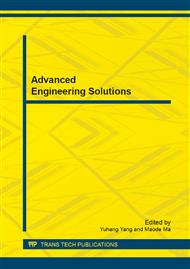p.141
p.146
p.151
p.156
p.161
p.165
p.169
p.173
p.177
Study on 3D Seismic Data Field Hybrid Rendering Technique of Natural Gas Hydrate
Abstract:
3D visualization technology is a tool used for displaying, describing, and understanding the characteristics of geologic bodies, and features high efficiency, objective accuracy, visual expression, etc. In this paper, the man-machine interactive interpretation and 3D visualization technology rapidly displaying and analyzing the 3D seismic data of hydrate ore volume is researched and developed using the hybrid rendering technique. Through the integrated interpretation on the 3D space structure, stratum, and seismic attributes, the visualized multi-attribute superimposition analysis is implemented for describing the spatial distribution characteristics of hydrate ore volume and exquisitely describing the subtle geological characteristics of hydrate ore volume. By the hybrid rendering technique, authentication and interpretation are provided for the geological exploration work, so as to greatly enhance the visualization and accuracy of the geological analysis, and also provide a good decision-making foundation for the subsequent development of resources.
Info:
Periodical:
Pages:
161-164
Citation:
Online since:
July 2014
Authors:
Price:
Сopyright:
© 2014 Trans Tech Publications Ltd. All Rights Reserved
Share:
Citation:


